eBook 2: Chapter 4
Implementing the Business Impact Analysis (BIA) Phase for the Singapore Institute of Technology (SIT)
Introduction
![[BCM] [KL] [E2] [C4] Business Impact Analysis](https://no-cache.hubspot.com/cta/default/3893111/d8e19cda-4e10-4cea-b716-82d8e03be8ec.png) The Business Impact Analysis (BIA) phase is a critical component of the Business Continuity Management (BCM) methodology, helping organisations understand the impact of disruptions on their operations and resources.
The Business Impact Analysis (BIA) phase is a critical component of the Business Continuity Management (BCM) methodology, helping organisations understand the impact of disruptions on their operations and resources.
For Kinderland Singapore, a leading early childhood education provider, the BIA phase will identify and assess the potential consequences of disruptions to its Critical Business Functions (CBFs), which directly affect its ability to provide essential services to children, parents, and staff.
This chapter outlines the steps involved in conducting a BIA, with specific examples and requirements related to Kinderland.
It will guide BCM coordinators at Kinderland through the process of identifying impacts, setting recovery priorities, and defining impact tolerances for each identified CBF.
The BIA Process
Identifying Critical Business Functions (CBFs)
To start the BIA process, Kinderland’s leadership and BCM team must identify and document its CBFs.
These functions represent the most vital operations and services essential to the organisation’s continued ability to deliver its educational and care services.
Below is a summary of the key CBFs for Kinderland:
- CBF-1: Classroom operations and care routines: This includes the daily routines of child care, learning activities, and ensuring the well-being of children during school hours.
- CBF-2: Curriculum development and teaching delivery: This function ensures that the curriculum is delivered effectively, including lesson planning, teaching resources, and activities.
- CBF-3: Child health and nutrition services: Involves providing children with healthy meals and ensuring that their health and medical needs are met throughout the day.
- CBF-4: Parent engagement and communication: A vital function that ensures ongoing communication with parents regarding their children’s development and daily activities.
- CBF-5: Admissions and enrolment: The process by which new children are enrolled, including the management of waiting lists and registration documentation.
- CBF-6: Human resources and staff scheduling: This function involves scheduling staff shifts, managing rosters, and ensuring adequate staffing for the safe operation of the centre.
- CBF-7: Finance, billing, and subsidies: This function includes billing, collection of fees, and managing government subsidies, such as those provided by the Early Childhood Development Agency (ECDA).
- CBF-8: IT and digital learning systems: The technology infrastructure, including the use of digital tools for learning, communication, and administration.
- CBF-9: Facility management and security: Ensuring the safety, cleanliness, and functionality of the physical environment, including security measures to protect children and staff.
Impact Assessment for Each CBF
These priorities are based on the function's criticality, the potential consequences of its disruption, and the availability of resources to restore it.
For Kinderland, some functions may require more immediate recovery, such as classroom operations and child health services. In contrast, others, like finance and billing, though important, may have a slightly longer recovery time window.
Once the CBFs are identified, the next step is to assess the impact of disruptions on each function. This includes considering both the immediate and long-term consequences.
For example:
- CBF-1 Classroom operations and care routines: A disruption here could lead to an inability to care for children, which directly affects their safety and well-being. The impact would be immediate, requiring a quick recovery.
- CBF-3 Child health and nutrition services: A disruption could affect the provision of meals or essential health care services, leading to both immediate and long-term health risks for children.
- CBF-8 IT and digital learning systems: A disruption to IT systems could affect communication, lesson delivery, and administrative processes, with cascading impacts on other functions such as curriculum delivery (CBF-2) and parent communication (CBF-4).
Setting Recovery Priorities
After assessing the impact of each function, the next step is to define the recovery priorities.
These priorities are based on the function's criticality, the potential consequences of its disruption, and the availability of resources to restore it.
For Kinderland, some functions may require more immediate recovery, such as classroom operations and child health services.
In contrast, others, such as finance and billing, though important, may have a slightly longer recovery time window.
Defining Impact Tolerances
Impact tolerances are the maximum acceptable levels of disruption for each critical function. Setting these tolerances helps Kinderland establish realistic recovery objectives and timelines.
Impact tolerances are the maximum acceptable levels of disruption for each critical function. Setting these tolerances helps Kinderland establish realistic recovery objectives and timelines.
For example, the tolerances for CBF-1 (classroom operations) would be much lower (i.e., recovery needs to happen immediately) compared to CBF-7 (finance and billing), which may tolerate a longer recovery time.

The Business Impact Analysis phase is an essential step in ensuring that Kinderland can effectively respond to disruptions and minimise the impact on its critical functions.
By identifying and assessing the potential impacts of disruptions to its CBFs, Kinderland can prioritise its recovery efforts, set realistic impact tolerances, and establish a solid foundation for developing its Business Continuity Plans.
As part of the overall BCM methodology, the BIA enables Kinderland to not only meet ISO22301 requirements but also ensure that its services remain resilient and reliable, even in the face of unforeseen events.
With a thorough, well-executed BIA, Kinderland will be better positioned to continue providing quality care and education to the children it serves, safeguarding their well-being and the trust of their families.



![BCM E2 PM [Business Impact Analysis] Banner](https://blog.bcm-institute.org/hs-fs/hubfs/BCM%20E2%20Blog%20Banner/BCM%20E2%20PM%20%5BBusiness%20Impact%20Analysis%5D%20Banner.png?width=750&height=150&name=BCM%20E2%20PM%20%5BBusiness%20Impact%20Analysis%5D%20Banner.png)



![Register [BL-B-3]*](https://no-cache.hubspot.com/cta/default/3893111/ac6cf073-4cdd-4541-91ed-889f731d5076.png)



![FAQ [BL-B-3]](https://no-cache.hubspot.com/cta/default/3893111/b3824ba1-7aa1-4eb6-bef8-94f57121c5ae.png)
![Email to Sales Team [BCM Institute]](https://no-cache.hubspot.com/cta/default/3893111/3c53daeb-2836-4843-b0e0-645baee2ab9e.png)





